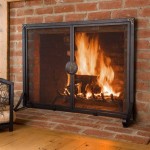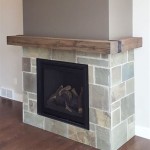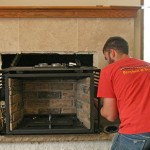Brick Cleaner for Fireplace: Maintaining a Clean and Safe Hearth
Fireplaces provide warmth and ambiance to homes, but their frequent use results in the accumulation of soot, creosote, and other residues on the brick surfaces. These deposits not only detract from the aesthetic appeal of the fireplace but also pose potential fire hazards. Selecting and properly utilizing a brick cleaner specifically designed for fireplaces is crucial for maintaining a clean and safe hearth. This article provides a comprehensive overview of brick cleaners for fireplaces, covering their types, application methods, safety considerations, and key factors to consider when choosing a suitable product.
The accumulation of soot and creosote on fireplace bricks is a natural consequence of burning wood. Soot is composed of fine particles of carbon produced by incomplete combustion, while creosote is a flammable tar-like substance that condenses in the chimney and on the firebox walls. Over time, these deposits build up and become difficult to remove using ordinary household cleaners. Specialized brick cleaners are formulated to penetrate these stubborn deposits and lift them away from the porous surface of the brick without causing damage. The selection of the appropriate cleaner and its proper application are paramount to ensure effective cleaning and the preservation of the brick’s integrity.
Ignoring the buildup of soot and creosote can lead to several problems. The most significant is the increased risk of chimney fires. Creosote is highly flammable, and even a small spark can ignite the accumulated buildup, potentially leading to a dangerous and rapidly spreading fire. Aesthetic issues are another concern. Soot-covered bricks look unsightly and can negatively impact the overall appearance of the room. Furthermore, the porous nature of brick can trap odors, and the accumulation of soot and creosote can contribute to a persistent smoky smell in the home. Regular cleaning with a suitable brick cleaner helps to mitigate these risks and maintain a clean, safe, and aesthetically pleasing fireplace.
Types of Brick Cleaners for Fireplaces
A variety of brick cleaners are available on the market, each with its own strengths and weaknesses. Understanding the different types and their characteristics is essential for making an informed decision. These cleaners generally fall into three main categories: chemical cleaners, enzymatic cleaners, and natural cleaners.
Chemical Cleaners: These cleaners typically contain strong solvents and alkaline agents designed to dissolve and loosen stubborn soot and creosote deposits. They are often the most effective option for heavily soiled bricks, but they also pose the greatest risk of damage and require careful handling. Chemical cleaners can be further categorized into acidic and alkaline solutions. Acidic cleaners are generally more effective at removing mineral deposits and efflorescence, while alkaline cleaners are better suited for removing soot and grease. When using chemical cleaners, it is crucial to follow the manufacturer's instructions precisely and wear appropriate protective gear, including gloves, eye protection, and respiratory protection. Furthermore, adequate ventilation is essential to avoid inhaling harmful fumes.
Enzymatic Cleaners: These cleaners utilize enzymes to break down organic matter, such as soot and creosote. They are generally considered to be safer and more environmentally friendly than chemical cleaners, but they may not be as effective on heavily soiled bricks. Enzymatic cleaners work best on lightly soiled surfaces and require a longer contact time to fully break down the deposits. They are a good option for regular maintenance cleaning and for individuals who are sensitive to harsh chemicals. The enzymes in these cleaners target the specific chemical bonds within the soot and creosote, gradually dissolving the deposits into smaller, more easily removable particles.
Natural Cleaners: A variety of natural ingredients can be used to clean fireplace bricks, including vinegar, baking soda, and lemon juice. These options are generally the safest and most environmentally friendly, but they may require more effort and time to achieve satisfactory results. Natural cleaners are best suited for lightly soiled bricks and for those seeking a completely non-toxic cleaning solution. For example, a paste made from baking soda and water can be applied to the bricks and allowed to sit for several hours before scrubbing away the residue. Similarly, a solution of vinegar and water can be used to wipe down the bricks and remove light soot stains. While natural cleaners may not be as powerful as chemical cleaners, they are a safe and effective option for regular maintenance cleaning.
Application Methods for Brick Cleaners
The effectiveness of a brick cleaner depends not only on the type of cleaner used but also on the application method. Proper application ensures that the cleaner penetrates the deposits effectively and minimizes the risk of damage to the brick. The specific application method will vary depending on the type of cleaner and the level of soiling, but some general guidelines apply.
Preparation: Before applying any brick cleaner, it is essential to prepare the area by removing loose debris, such as ash and soot. Use a brush or vacuum cleaner to thoroughly clean the bricks. Cover any surrounding surfaces, such as floors and furniture, with drop cloths to protect them from spills and splashes. It is also advisable to test the cleaner on a small, inconspicuous area of the brick to ensure that it does not cause discoloration or damage. This preliminary test will help to prevent unwanted surprises and ensure that the cleaner is compatible with the specific type of brick.
Application: Apply the brick cleaner according to the manufacturer's instructions. For chemical cleaners, use a brush or sprayer to apply the cleaner evenly to the brick surface. Allow the cleaner to dwell for the recommended time, which is typically between 10 and 30 minutes. For enzymatic and natural cleaners, a longer dwell time may be necessary. In some cases, it may be necessary to reapply the cleaner several times to fully penetrate the deposits. Avoid allowing the cleaner to dry on the brick surface, as this can make it more difficult to remove. Keep the area well-ventilated during the application process.
Cleaning and Rinsing: After the dwell time, scrub the bricks with a stiff-bristled brush to loosen the remaining deposits. For heavily soiled bricks, a wire brush may be necessary. Be careful not to scrub too aggressively, as this can damage the brick surface. Rinse the bricks thoroughly with clean water to remove all traces of the cleaner and loosened deposits. Use a sponge or cloth to wipe down the bricks and ensure that no residue remains. Repeat the rinsing process as needed to ensure that the bricks are completely clean. After rinsing, allow the bricks to air dry completely.
Safety Considerations When Using Brick Cleaners
Using brick cleaners, especially chemical cleaners, requires careful attention to safety precautions. Failure to follow these precautions can result in skin irritation, respiratory problems, and other health hazards. It is crucial to prioritize safety throughout the entire cleaning process.
Personal Protective Equipment (PPE): Always wear appropriate PPE when handling brick cleaners. This includes gloves, eye protection, and respiratory protection. Gloves will protect your hands from skin irritation, while eye protection will prevent the cleaner from splashing into your eyes. Respiratory protection, such as a respirator or facemask, is essential when using chemical cleaners, as they can release harmful fumes. Ensure that the PPE is properly fitted and in good condition before use. Disposable gloves and respirators are recommended to avoid contamination.
Ventilation: Ensure adequate ventilation when using brick cleaners. Open windows and doors to allow fresh air to circulate. If using chemical cleaners, consider using a fan to further improve ventilation. Avoid working in enclosed spaces where fumes can accumulate. Proper ventilation will help to minimize the risk of inhaling harmful fumes and prevent respiratory problems.
Storage and Disposal: Store brick cleaners in a safe place, out of reach of children and pets. Keep the containers tightly closed to prevent spills and leaks. Dispose of empty containers properly, following local regulations. Never pour brick cleaners down the drain, as this can contaminate the water supply. Consult the manufacturer's instructions for specific disposal guidelines. Proper storage and disposal will help to prevent accidents and protect the environment.
Choosing the correct brick cleaner for a fireplace involves assessing several factors. The type of brick, the severity of the soiling, and the user's sensitivity to chemicals all play a role in the decision-making process. Understanding the different types of cleaners available, their application methods, and the necessary safety precautions will ensure a clean and safe fireplace, preserving its aesthetic appeal and functionality for years to come. Regular cleaning is an investment in the longevity and safety of the home.

How To Clean Brick The Home Depot

Paint N L Fireplace Cleaner Chimneysaver

How To Clean Fireplace Bricks 9 Steps With S Wikihow

Rutland 16 Fl Oz Brick And Stone Cleaner Spray Bottle 83 6 The Home Depot

How To Clean Brick Fireplace Royal Stone Care

How To Clean A Fireplace Diy Basics

Mortar Wash Brick Fireplace Makeover Dimples And Tangles

How To Clean Fireplace Bricks 9 Steps With S Wikihow

How To Clean Brick The Home Depot

Fixr Com Brick Vs Stone Fireplace Pros Cons Comparisons And Costs
Related Posts








